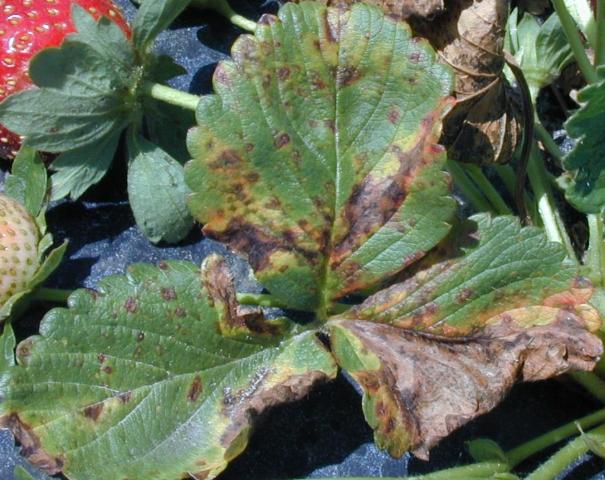By Clint Thompson
Angular leaf spot disease has been problematic for Florida strawberry growers. The colder winter weather contributed to its impact this season, says Natalia Peres, professor of plant pathology at the University of Florida Institute of Food and Agricultural Sciences (UF/IFAS) Gulf Coast Research and Education Center.

Credit: University of Florida, GCREC
“It usually becomes worse when we have freeze events which we’ve had a few this season. It has become more problematic than usual,” Peres said. “We do not have a lot of recommendations for that one, as far as sprays.”
According to UF/IFAS, angular leaf spot is a bacterial disease. It is mostly spread by rain and overhead sprinkler irrigation when it’s implemented for freeze protection. Lesions start as small and irregular spots on the bottom side of the leaflets. When there is high moisture on the leaves, the lesions will ooze sticky droplets of bacteria. As the disease worsens, the lesions grow and coalesce to form reddish-brown spots, which become necrotic.
Unfortunately, growers do not have any fungicide options they can apply now to protect against the disease.
“We do have recommendations but they’re preventative sprays. They should have started before. Those are like the copper applications,” Peres said. “They’re trying that now, but we know it’s not as effective as if they would have started preventatively.”
During severe outbreaks, the pathogen can cause lesions on the calyx of the fruit. If the symptoms are severe enough, the calyxes will dry up, rendering the fruit unmarketable.
The best management tactic for controlling angular leaf spot is to use transplants that are free of the pathogen. Growers are encouraged to reduce the use of overhead sprinklers during plant establishment and freeze protection. Producers should also avoid moving equipment when conditions are wet in a field.









